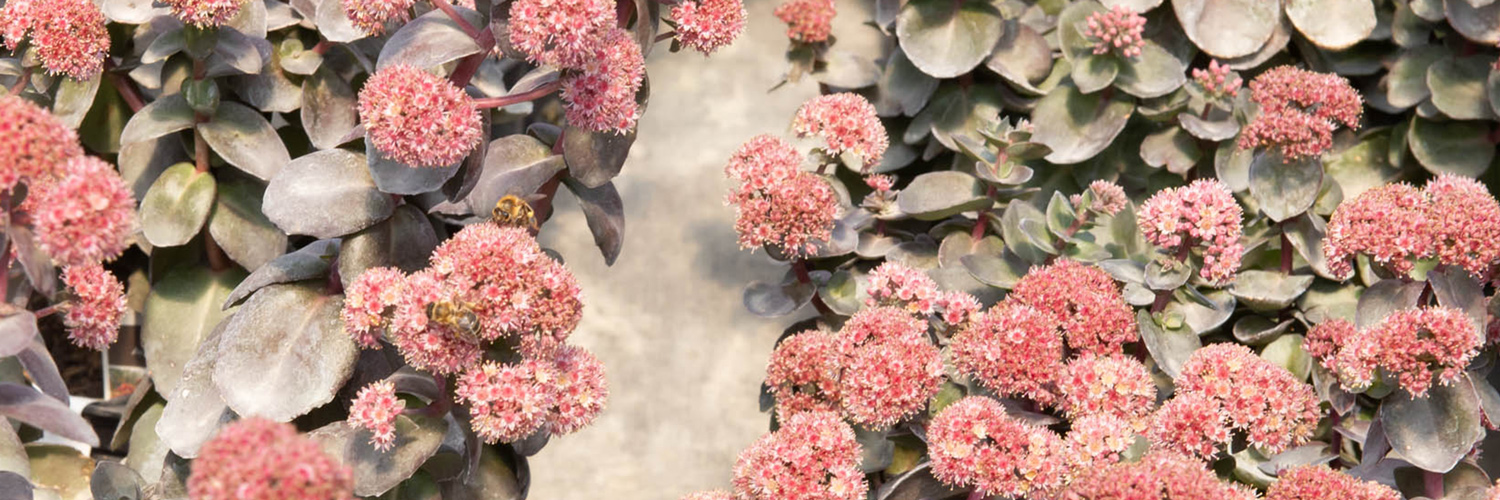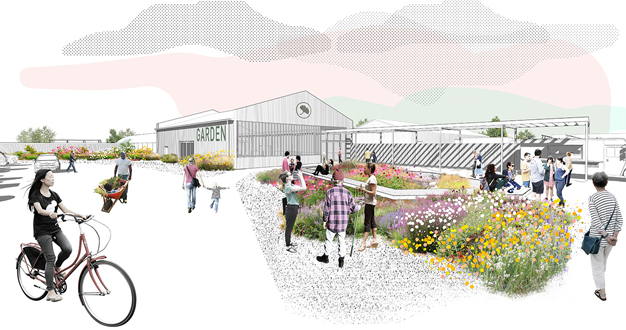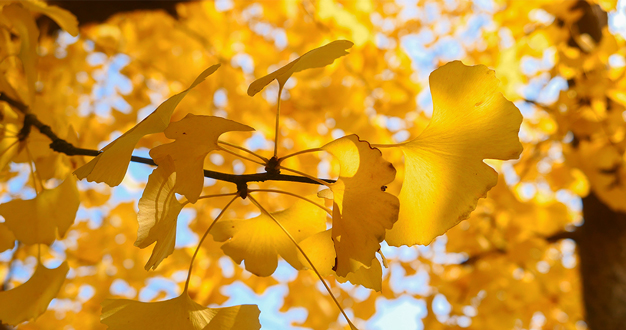
We grow a lot of different plants at our farms. This gives us the privilege of observing them in all the stages of their growth and development – and tall sedum is one of our favorites to watch. When tall sedum blooms, it attracts bees and other pollinators in droves, and it makes growing sedum a fascinating project for our nursery team at the farm. Here, we introduce you to tall sedum and share why you – and your neighborhood pollinators – might love to have it in your garden.
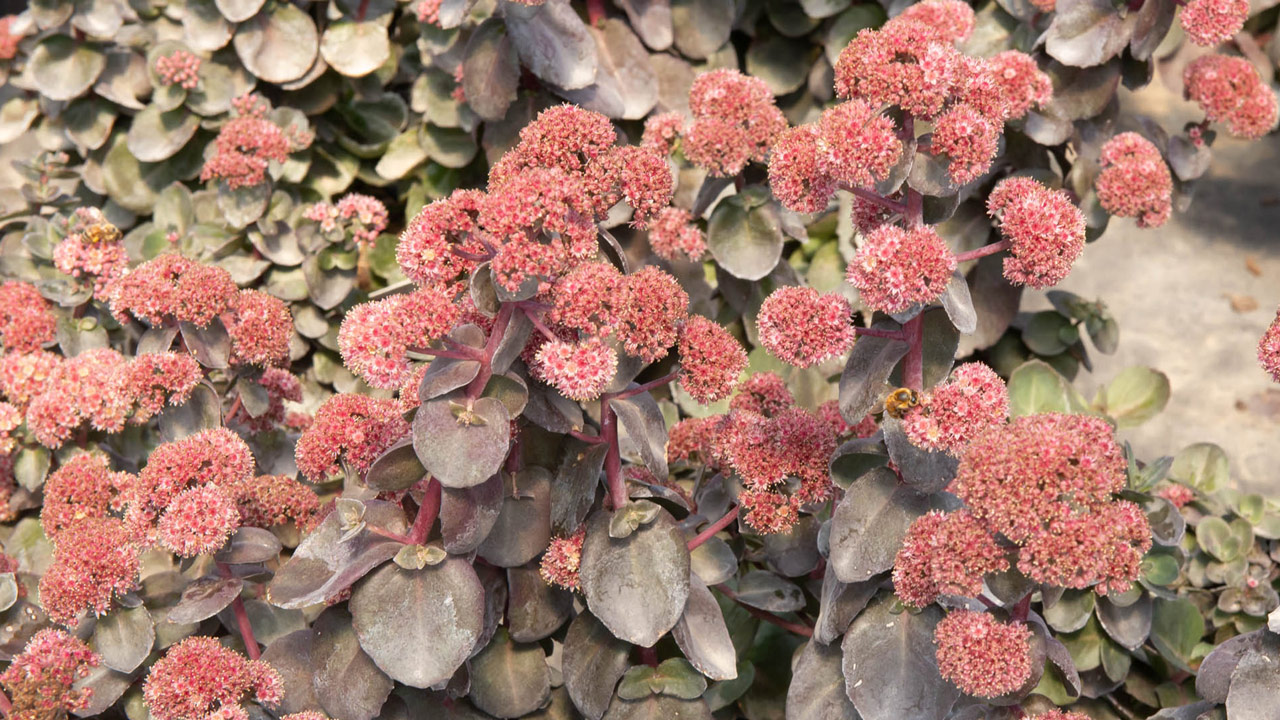
Pollinators Adore Tall Sedum
If your landscape plans include supporting beneficial pollinators like bees and butterflies, then tall sedum deserves a spot on your shopping list. Just a peek into the grow house on our farm illustrates how attractive sedum is to the neighborhood bees. Nursery stock grower Hannah Richardson has adjusted her watering schedule to avoid disturbing the hundreds of little bees crawling among the sedum blooms in the afternoon.
Hannah says at first you don’t notice just how many bees there are – they’re surprisingly quiet in their work. But when she looks closer, she notices at least three or four bees of various species working busily on each plant. Initially, Hannah thought sharing a grow house with hundreds of bees would be a little daunting, but it’s actually quite a peaceful scene. If she’s quiet and respectful, they continue with their industrious gathering – and with the faintest contented hum. Right now, three of the five varieties of sedum in the grow house are blooming, and as the other two open their flowers in the coming weeks, Hannah expects it’ll be a pollinator party in there.
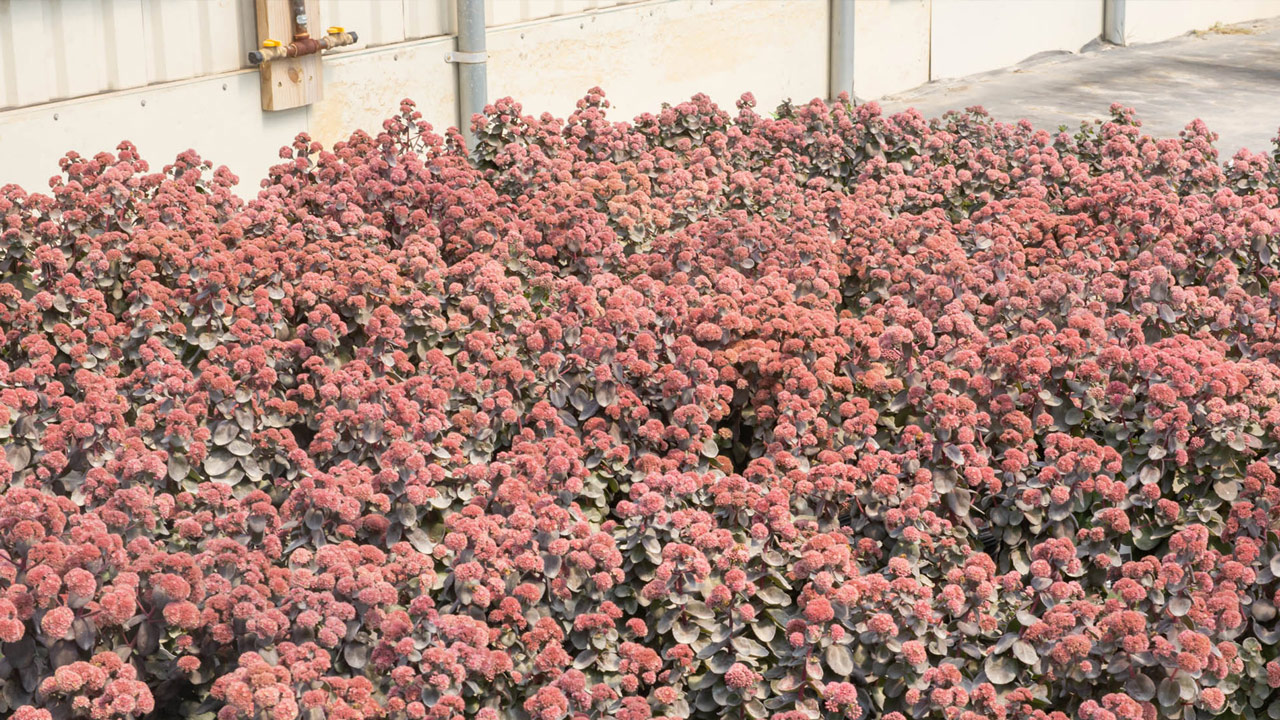
People Love the Blooms Too
Bees aren’t the only big fans of tall sedum’s unique bloom. The show begins as tall sedum produces numerous dense, flat clusters of tiny, pale green blooms on top of sturdy, succulent stems. They probably remind you a little of broccoli, in fact. As the seasons progress through summer and into the fall, the tiny flowers transition from green to pale pink, then deeper shades of pink and mauve.
You’ll notice a definite increase in pollinator activity around tall sedum in late summer when the blooms are fully open. At times, there may be a dozen or more bees, butterflies, moths, and other nectar-hungry insects visiting a single sedum plant. Tall sedum is especially valuable to migrating species of butterflies – like the threatened monarch – who use sedum as a refueling station for their long trek south for the winter.
And when winter does arrive, the dried flower heads persist on their stems providing winter interest in the landscape – especially when they catch little platforms of snow on top.
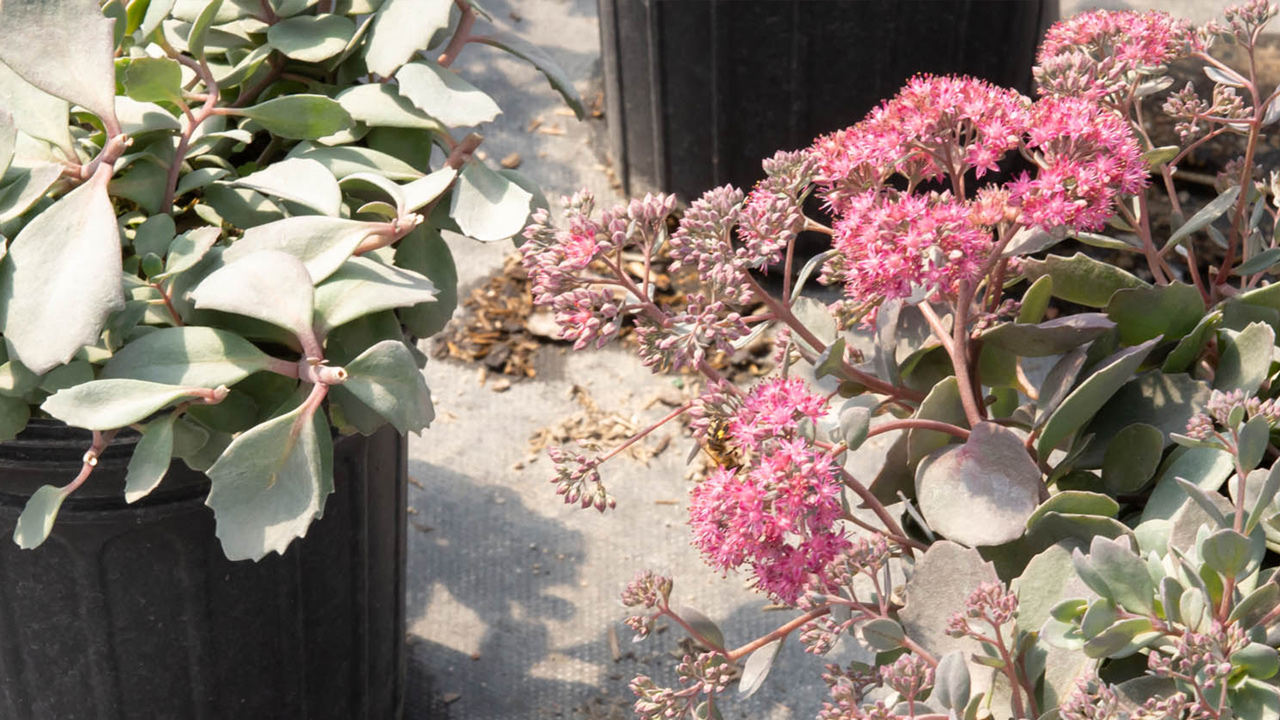
Versatile + Full of Texture
Aside from its popular blooms, tall sedum brings a unique texture to Midwest gardens. Sometimes called showy stonecrop, tall sedum is succulent with upright, sturdy stems and thick, fleshy foliage. Tall sedum fits almost any sunny landscape – as a specimen, in a border, or right in the mix within a cottage-style perennial bed. Its clean, succulent foliage and tidy, mounding habit lends a contemporary style to simpler landscape designs too.
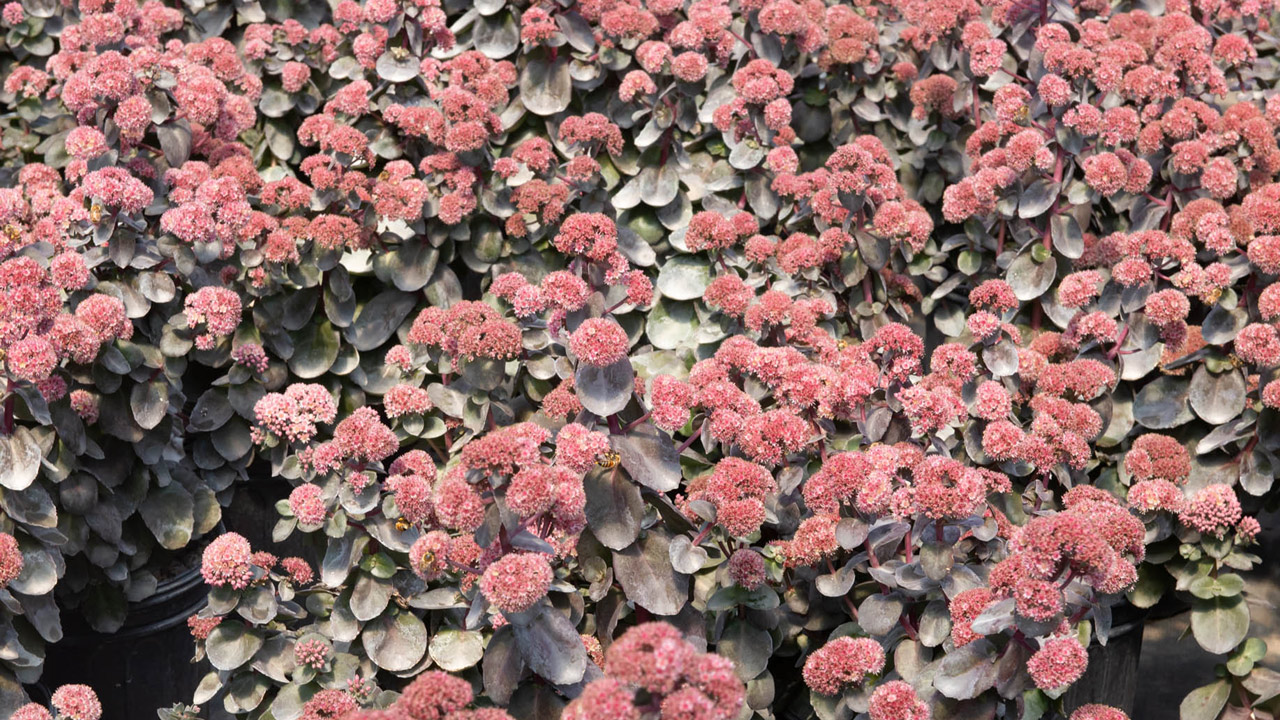
Easy as They Come
And tall sedum is as care-free as any perennial you can find for your landscape. Each spring, new stems rise from the ground into neat mounds of succulent foliage and stems. With enough light, these mounds stay upright and tidy. With too little sun, some may start to flop a bit, so find a spot in the full sun to set your sedum. Once established, tall sedum is also quite tolerant of heat and dry soil too. To propagate, simply take a stem cutting and stick it in the soil. After a while, you’ll have a whole new plant.
Bring on the Bees
As you probably know, populations of our important pollinators continue to decline as climate change, habitat loss, and other pressures mount. Even a few nectar-rich perennials in your landscape can provide a welcome resource for our bees, butterflies, and other beneficial insects – and tall sedum is one of their favorites. If you’d like to see for yourself, stop by the Nursery Yard and check out our collection of tall sedum and other pollinator-friendly plants. If you don’t see them right away, just look for the activity above the blooms – and listen for that faint hum.

